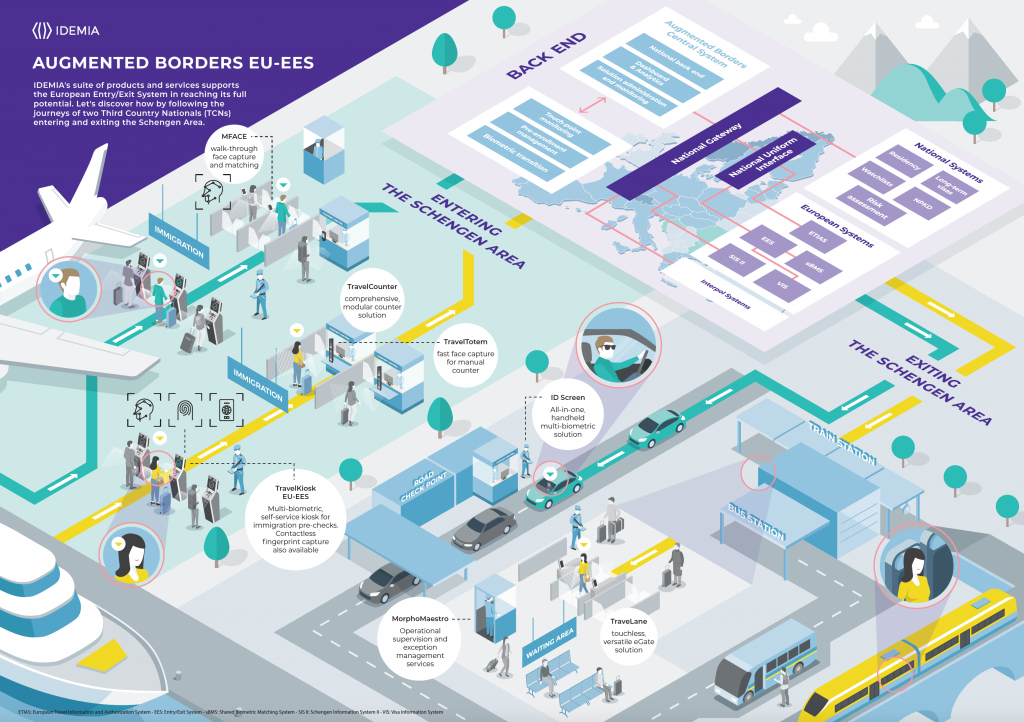Implementation of the European Entry/Exit System (EES) will start from 2021. The large-scale IT system planned by the European Union for the automatic monitoring of the border-crossing of third-country nationals is scheduled to take force in February 2022.
The European EES will register travelers from third-countries, both short-stay visa holders and visa exempt travelers, each time they cross an EU external border. The system will register the person’s name, type of the travel document, biometric data (fingerprints and captured facial images) and the date and place of entry and exit, in full respect of fundamental rights and data protection.
In the frame of this European EES program, Idemia, a leader in augmented identity, will deliver the shared biometric matching system together with Sopra Steria. This is an automated multi-biometric identification system for foreign nationals whose central database will be hosted by the European agency, eu-LISA.
Idemia’s EES offer supports Schengen member states to be compliant with the European EES. Let’s have a look at the future journeys of third-country nationals entering and exiting the Schengen Area. The infographic outlines how the right passenger-facing and back-end solutions can make the process as smooth as possible for travelers.

